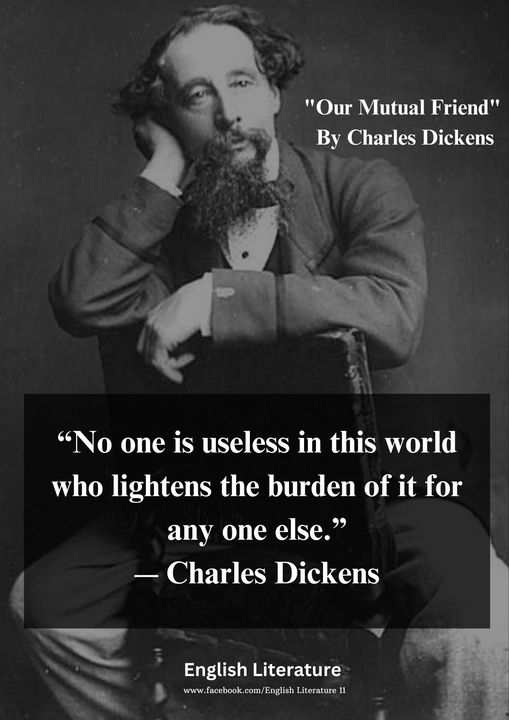― Charles Dickens

“No one is useless in this world,’ retorted the Secretary, ‘who lightens the burden of it for anyone else.”
― Charles Dickens, Our Mutual Friend
Our Mutual Friend, Charles Dickens’s final completed novel, published serially from 1864 to 1865, offers a striking panorama of London society in the mid-Victorian era. This work is among Dickens’s most nuanced social commentaries, showcasing his fascination with the interplay of wealth, identity, and moral corruption. The novel unfolds across various social classes, all bound by money’s influence, its transformative power, and the moral compromises it can exact.
⟫⟫ Summary of the Novel
In “Our Mutual Friend”, Charles Dickens delves into the dark influence of wealth on Victorian society. The story begins with the presumed death of John Harmon, heir to a fortune built from the “dust” (waste) business. Harmon secretly returns to London, disguised as John Rokesmith, to observe those around him before revealing his true identity. As he falls in love with Bella Wilfer, a young woman initially more interested in wealth than love, Harmon wrestles with his own identity and society’s materialistic values.
The novel unfolds with numerous interwoven stories, including the lives of the Boffins, a newly wealthy couple who inherit the Harmon fortune; the Veneerings, shallow social climbers; and Bradley Headstone, a schoolmaster driven to violence by obsession. Through satire and complex characters, Dickens critiques social class, greed, and the moral consequences of wealth, ultimately showing that love and integrity are more valuable than money.
Leave a Reply